Oppo A15 review
Two-minute review
At the end of a busy 2020 for Oppo, the Oppo A15 was the brand’s cheapest Western smartphone offering yet. As such, you should set your expectations accordingly.
The phone’s all-plastic body feels solidly built, if entirely unspectacular, and the presence of a micro-USB port is something of a blast from the past (to put it politely). While its rear-mounted fingerprint sensor isn’t exactly forward-thinking, it’s pleasingly quick and reliable.
Turning to the front of the phone, such a generously sized display on a budget device isn’t the norm. At 6.52-inches, and with a relatively high peak brightness, it certainly makes an impression.
It’s just a shame then that this display’s 720p resolution doesn’t seal the deal. Media and web content looks grainier than we’d have liked.
Talking of media content, avid gamers should steer clear of this handset. The Oppo A15’s MediaTek MT6765 CPU is one of the humblest on the market, and it’s supported by a scant 3GB of RAM. And as a result of these modest components, even general navigation takes a bit of a hit.
Oppo has opted for a suitably sparse camera setup in the A15 – something we wouldn’t necessarily be averse to at this price, if it excelled at the basics. However, the camera setup’s lack of flexibility results in poor daylight shots. And while there is a Night mode here, it really doesn’t seem to do much good in low-light conditions.
One of the areas in which the Oppo A15 does deliver is battery life. A fairly large 4,230mAh unit serves those modest components well, happily taking you into a second day of use before needing a top up..
While it’s tempting to consider such a cheap, solidly built phone from this dependable brand, it’s worth separating price from value. Put simply, there are far better phones available for the same – or just a little more – money, including the Moto G8 and the Oppo A5 2020.
Oppo A15 price and release date
- Costs £119 (around €132/$162/AU$210)
- Available from now in the UK
- Unclear on whether it'll come to US or Australia
The Oppo A15 landed in the UK on November 26, 2020, at a price of £119 (around €132/$162/ U$210). There’s no news on a wider launch in the US, EU, or Australia as yet, but we’ll keep you posted.
This UK price makes it the most affordable phone the Chinese manufacturer has released in the West, coming in well below the Oppo A53 (£159) and the Oppo A72 (£219). Factor in the Oppo A9 2020 and the Oppo A5 2020, and it’s been a busy 12 months for this reliable brand’s budget line.
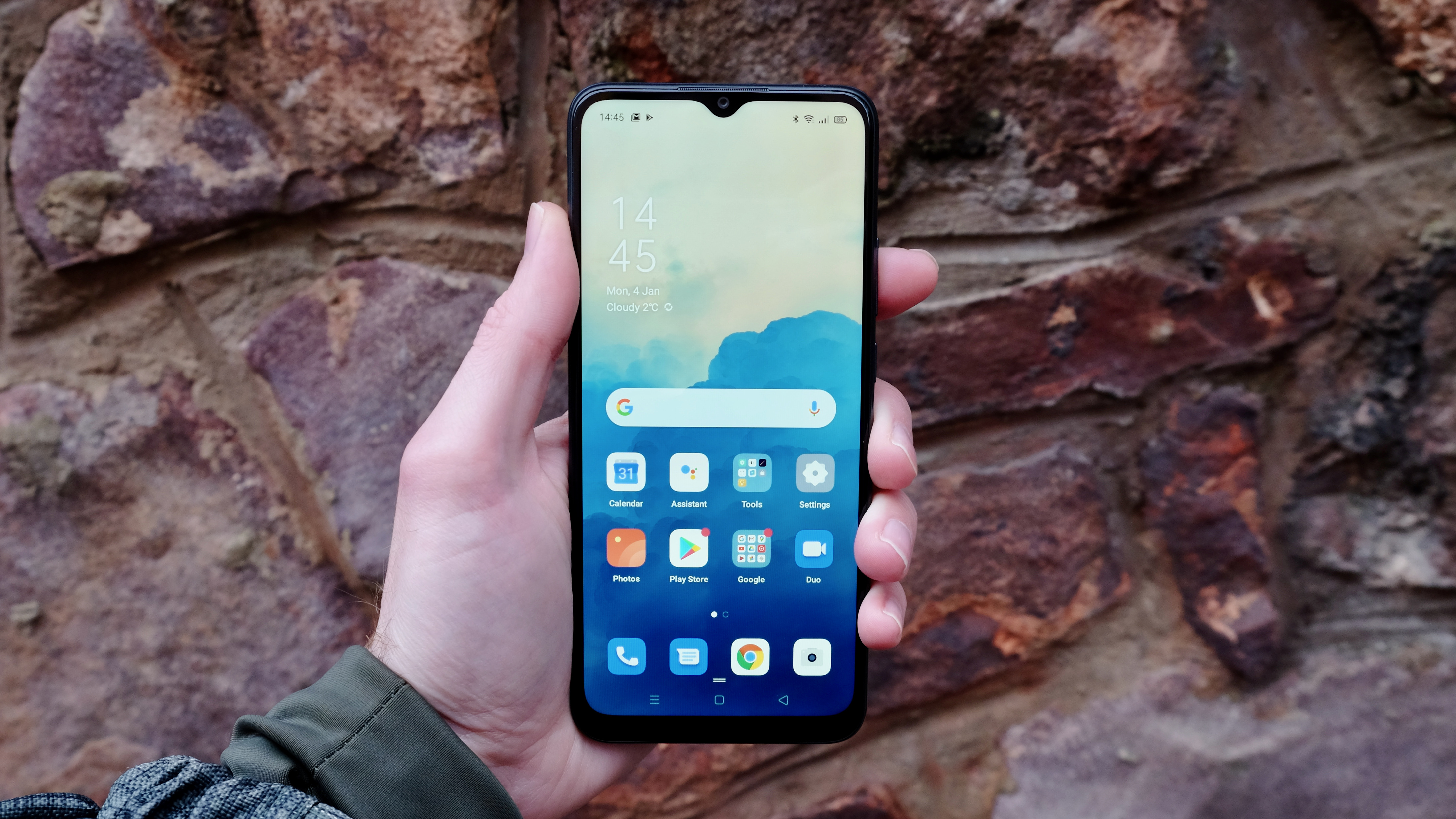
However, the Oppo A15 finds itself in a perilously tight sub-section of the budget market, where necessary cuts to keep the price down could cripple a phone. Phones such as the Nokia 3.4 and the Alcatel 3L (2020) have made similarly tough compromises to hit their sub-£130 price tag, with mixed results.
Can the Oppo A15 pull off this delicate balancing act, or has it trimmed too much of the fat?
Design
- Shiny all-plastic build
- MicroUSB and 3.5mm jack
There’s no getting away from the fact that the Oppo A15 is a super-cheap phone. Its entirely plastic design is almost completely without embellishment.
The rear of the device is a largely featureless expanse of plastic, shiny right up to the point at which it will be covered with greasy fingerprints. Your eye will probably be drawn to the square camera module in the top-left corner, which is framed by a faux-metal surround.
Just below this is a physical fingerprint sensor, which is another sign that this isn’t a premium phone. It is both reasonably fast and reliable, however, which is important.
You might expect the Oppo A15 to be a bit of a lightweight given all that plastic and a fairly slim 7.9mm body. But it has quite a heft to it at 175g. That isn’t inappropriately heavy, by any means, but you’ll know you’re carrying it.
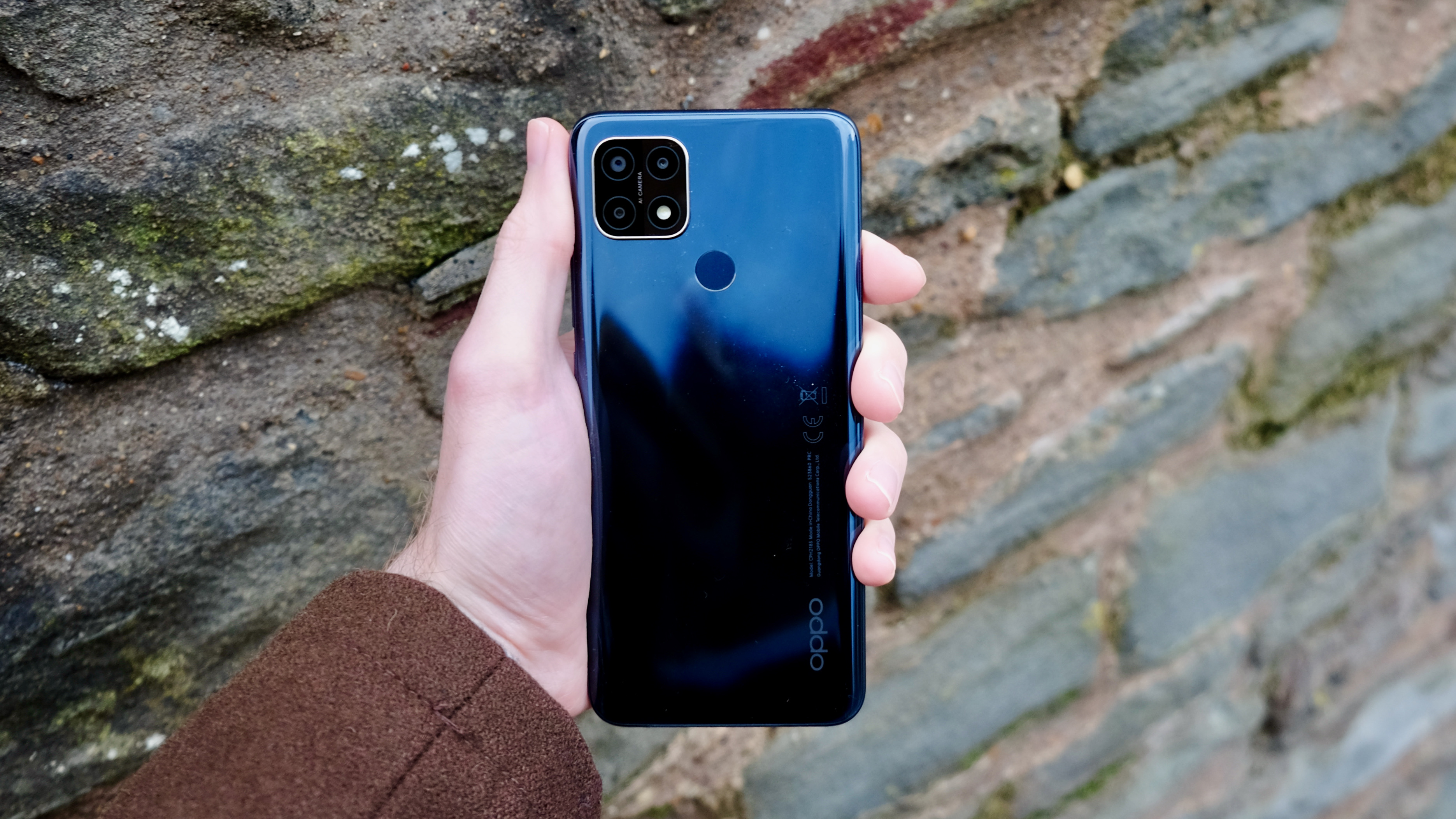
Around the front are some fairly chunky bezels by late 2020 standards. The phone’s forehead and chin, in particular, are larger than we’ve grown accustomed to. Meanwhile, a teardrop notch makes the phone feel a little dated at a time when hole-punch notches have become more the norm in the budget sector.
The budget choices continue as we switch our attention to the bottom of the phone, where a micro-USB port sits alongside a 3.5mm headphone jack. While the similarly priced Alcatel 3L also includes a creaky micro-USB port, the Nokia 3.4 manages to go full-on USB-C – so it is possible.
Display
- 6.52-inch IPS LCD
- Only HD+
Oppo Mobile UK managing director Kevin Cho claims that the Oppo A15 has been “designed with users’ social networking and entertainment needs in mind”, which explains the presence of a large 6.52-inch IPS LCD screen.
It gets relatively bright (for the price) at 480nits, and the colors are reasonably balanced too. But the screen’s level of sharpness doesn’t do media content any favors.
At just 720 x 1600, this is HD+/720p as opposed to the FHD+/1080p resolution that most phones shoot for. You won’t be watching Full HD video content natively here, and with a pixel density of just 269ppi, web content and photos won’t exactly pop either.

There’s no elevated refresh rate, with a regular 60Hz output. We wouldn’t expect higher refresh rates from such a cheap phone, but we have started seeing 120Hz displays in sub-£200 phones such as the Poco X3 NFC, so it’s worth mentioning.
It also isn’t unusual to find such a low-resolution display at this price, of course. The Alcatel 3L, the Nokia 3.4, and the Moto E7 Plus share this particular spec.
But it does prompt us to recommend that you at least consider phones a little higher up the market, if your budget can stretch closer to that £200 mark. Just a little more money (or similar money on a discounted early 2020 phone) can buy you far more bang for your buck, especially when it comes to the screen.
Camera
- Triple camera: 13-megapixel wide, 2-megapixel macro, 2-megapixel depth
- Barely adequate in daylight; terrible at night
The Oppo A15 comes with an ostensible triple camera setup, featuring a primary 13-megapixel lens supported by a 2-megapixel macro and a 2-megapixel depth sensor.
This is a familiar set up for the budget class – and, once again, the presence of that low-megapixel macro is hard to justify. Extreme close-ups look so grainy and ugly that we doubt many will use the Macro mode after their initial attempt.
It’s worth noting that the Nokia 3.4 and the Alcatel 3L both squeeze in an ultra-wide lens – although it’s fair to say that cheap ultra-wides are never particularly great. With that in mind, the argument for a single, decent wide lens is strong at this end of the market.
Either way, the onus here is wholly for that main sensor to come good. In general, evenly lit conditions, the results are just about acceptable given the low price tag. There’s a reasonable balance to shots, with Oppo’s customary natural color science.
However, we did notice a drop-off in detail towards the edge of the pictures we captured with the device. Objects containing lots of intricate detail, such as trees and bushes, would take on a granular, heavily processed look. You really don’t want to zoom in on any shots taken with the Oppo A15 either, since they don’t stand up well to closer scrutiny.
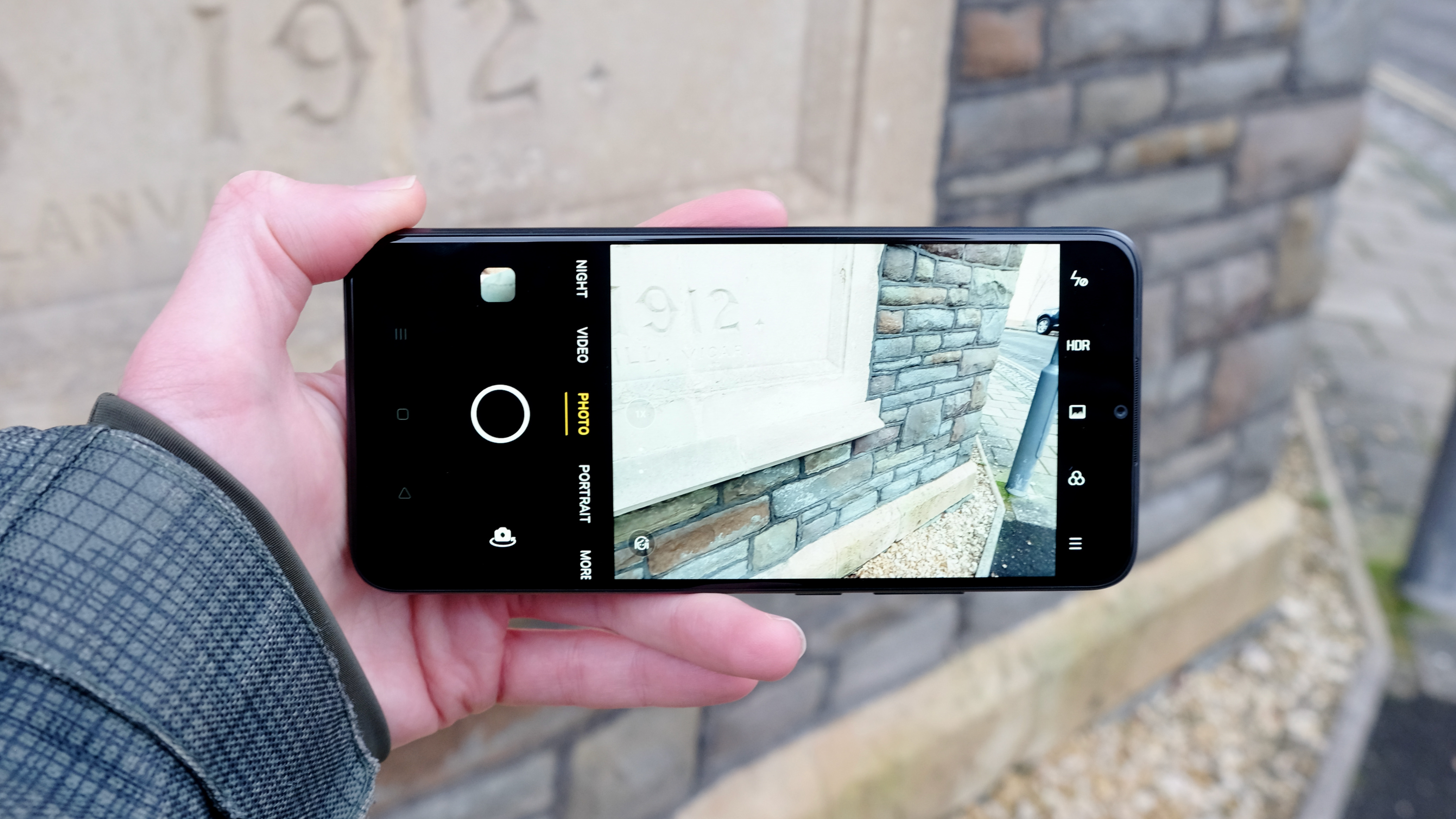
Talking of closer scrutiny, we found that close-up portrait shots struggled to get our subject in full focus, both in normal shooting mode and in the dedicated Portrait mode.
The camera also struggles with HDR situations, overexposing elements such as the sky in the background. Still, it’s possible to get pleasing, usable results in daylight under the right circumstances.
Low-light shooting, on the other hand, is a total write-off. We question the presence of the dedicated Night mode here since you don’t even get the forced ramp up in brightness seen with slightly more expensive phones – just a whole lot of murk and noise.
The 5-megapixel selfie camera around front isn’t much cop, either. It tends to smudge skin tones, even with the Beauty slider seemingly set to zero.
Camera samples



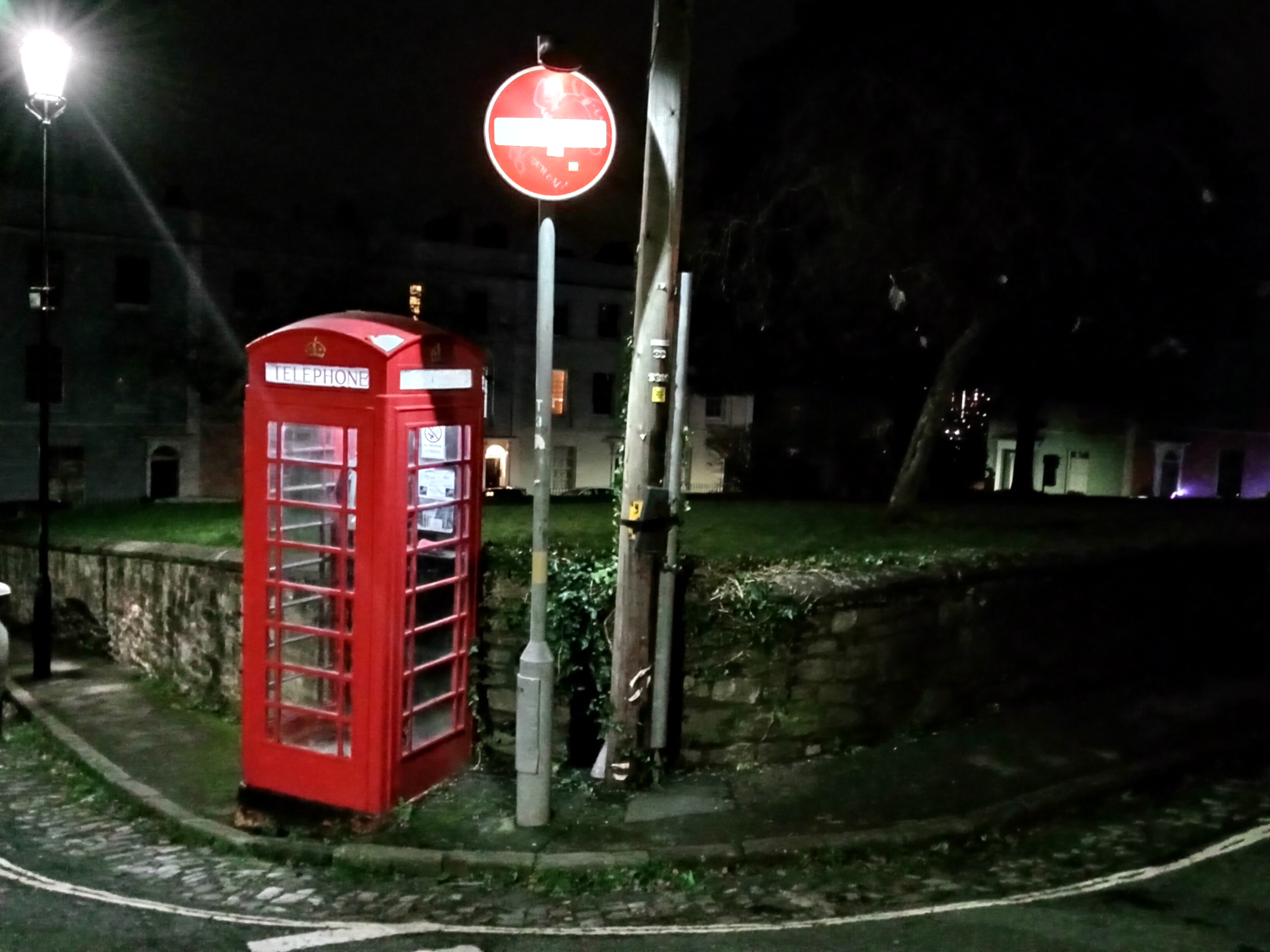

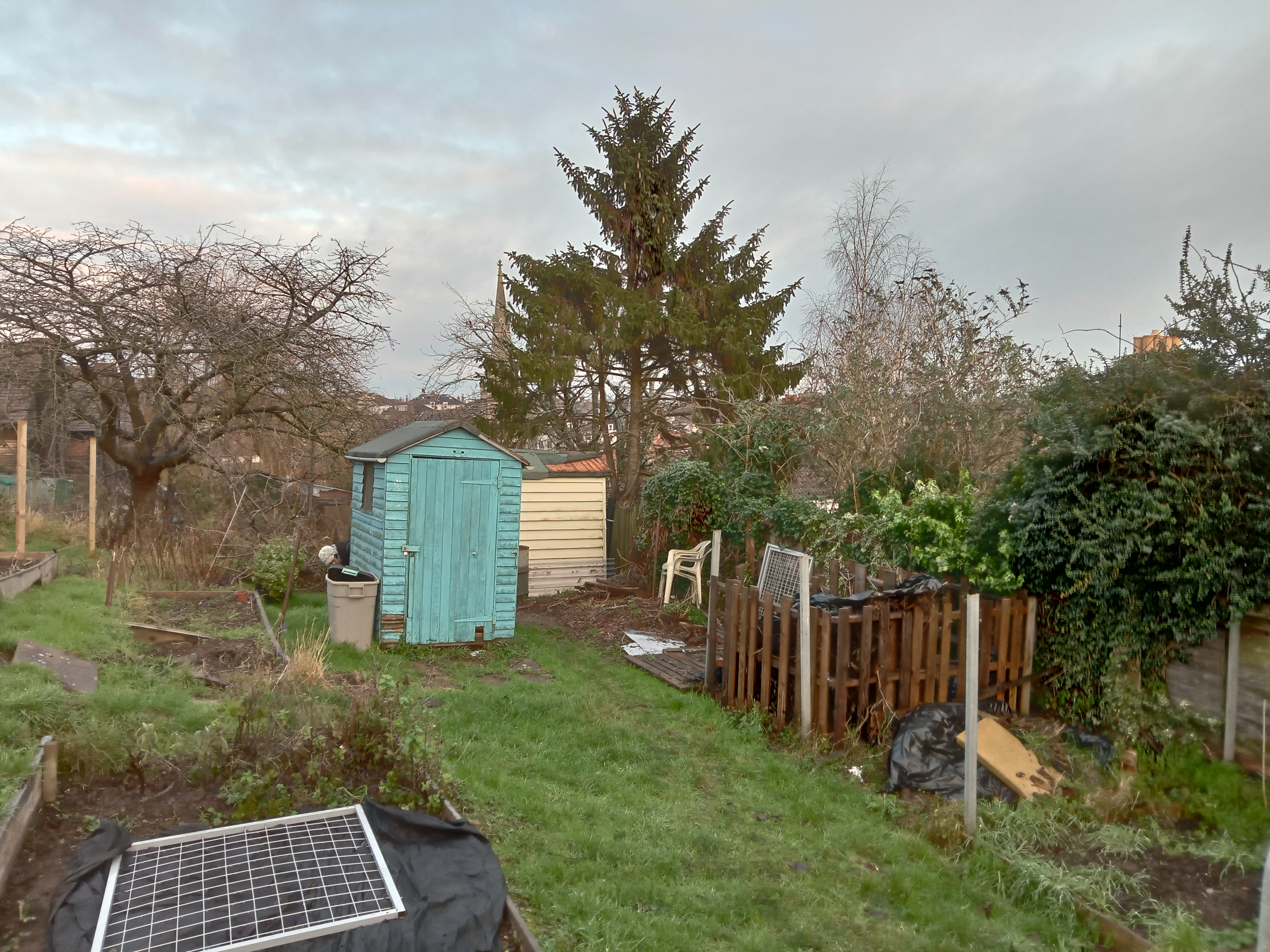
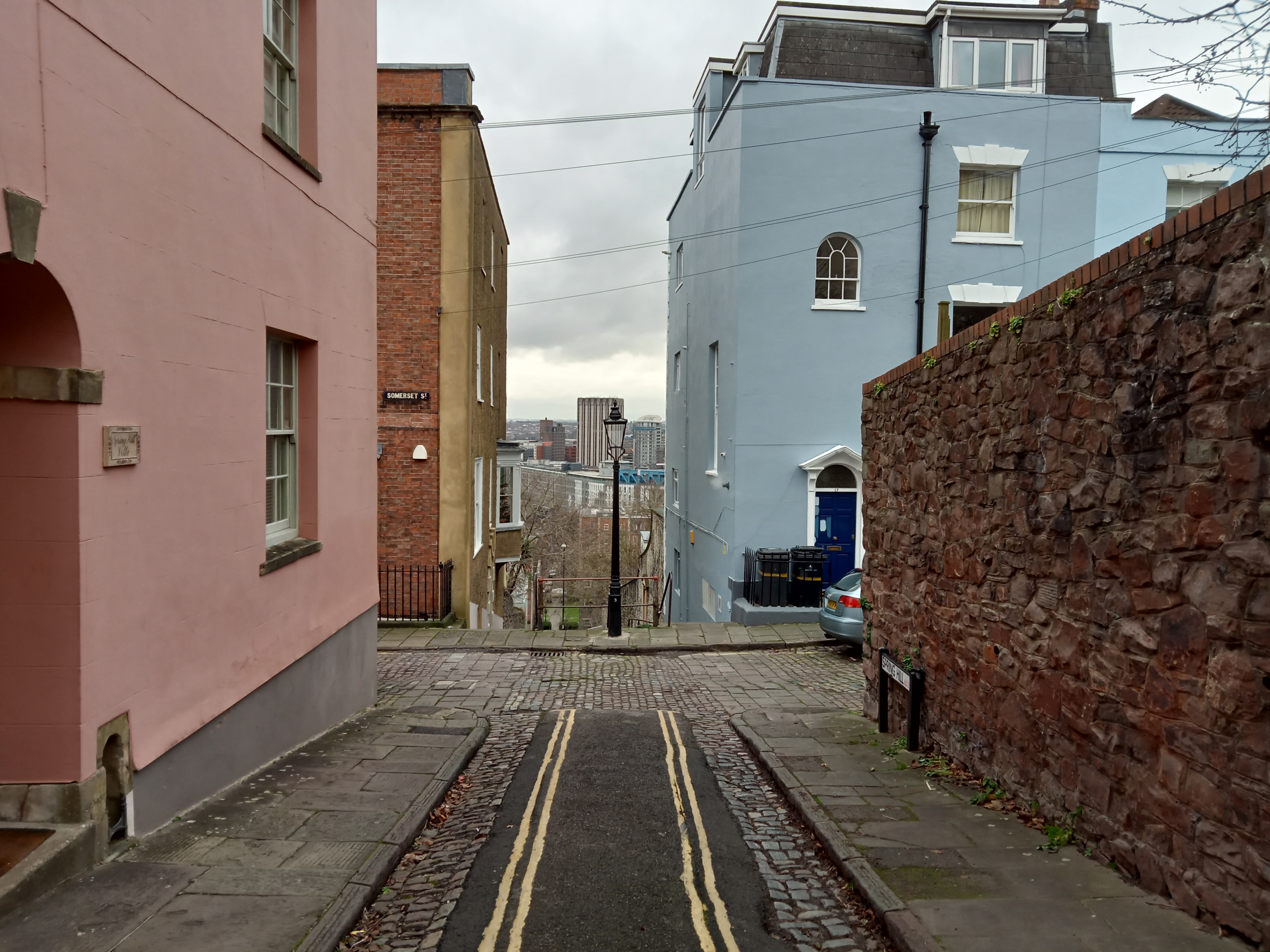

Specs and performance
- MediaTek MT6765 very slow
- Meagre 32GB of storage
With a price tag of £120, we wouldn’t expect the Oppo A15 to be an outstanding performer. But if there’s a certain minimum standard you’d expect from a smartphone, the A15 only barely meets it.
The culprit is the humble MediaTek MT6765 CPU, with a paltry 3GB of RAM supporting it. A Geekbench 5 multicore score of 930 is very low, even when compared to other budget phones.
Consider the older Oppo A5 2020 with its Snapdragon 665, which scored 1,301. Or, to use a contemporary of the Oppo A15’s, the Nokia 3.4, which managed to hit 1,188. It just pips the Alcatel 3L on 847, as a result of that phone’s even less capable MediaTek MT6762.
Benchmarks don’t tell the whole story, of course, but they tend to provide a hint of what can be expected. And sure enough, using the Oppo A15 is a far from a smooth experience, with small but frequent delays when moving between apps and scrolling through web pages. Apps such as Netflix can take a while to get up and running, and even Oppo’s own individual Settings menus take an extra beat to load.
Gaming is quite viable on the Oppo A15, but far from optimal. In PUBG Mobile, the graphical settings won’t go any higher than Balanced/Medium – one notch of the bottom – and even then the performance is far from silky smooth. Even a light, well-optimized game such as Bullet Boy stutters when you first load into a level.
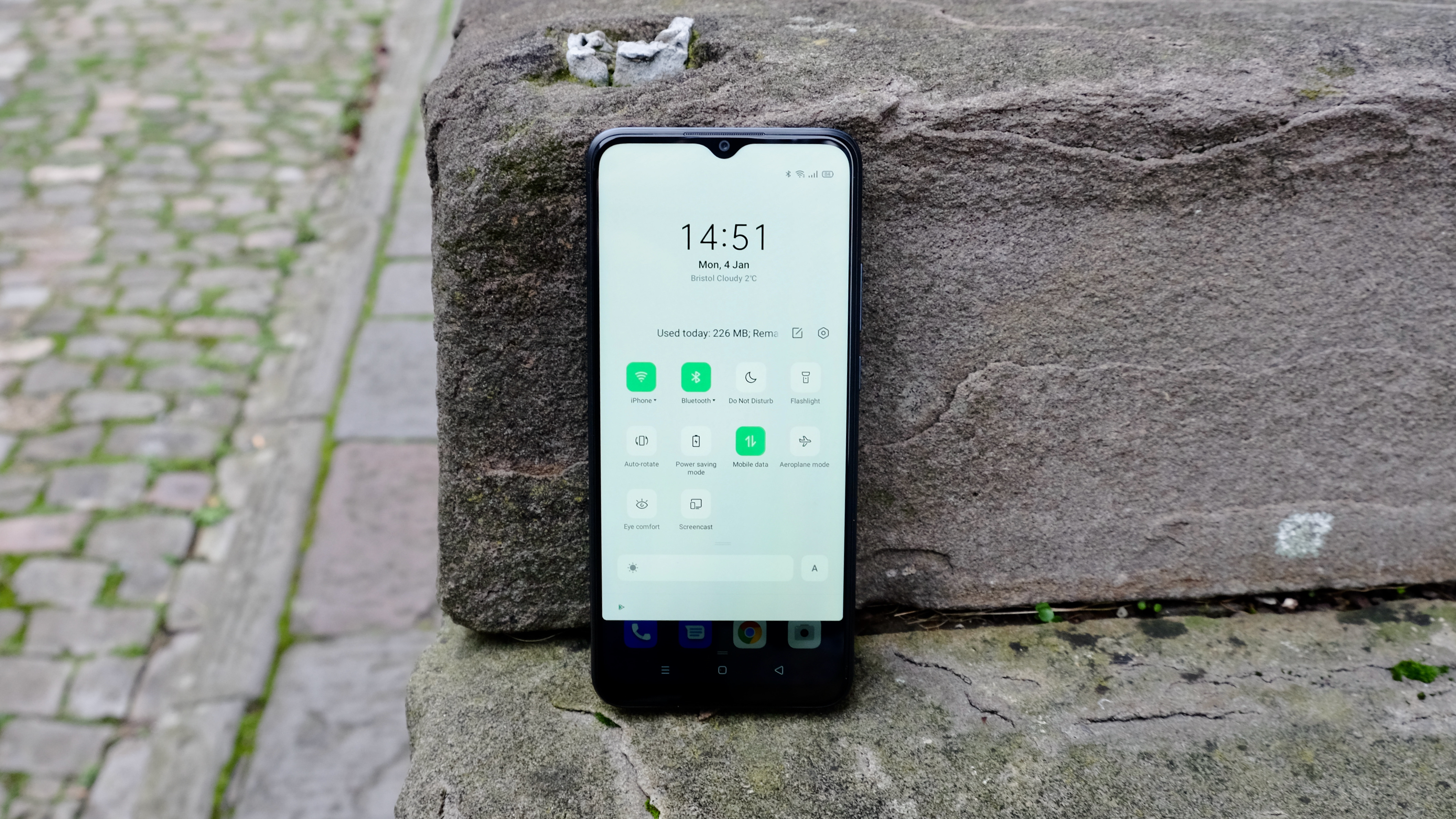
Again, we need to remind you that this is a phone that costs a mere £120. But we must also repeat the point that shopping smarter can get you a phone that will run through tasks with fewer pauses, and play games smoothly on medium graphical settings at Full HD.
Elsewhere you get 32GB of internal storage, which really isn’t a lot when sub-£200 phones are starting to pack 128GB as standard. You can expand this by up to 256GB via the included microSD card slot.
The Oppo A15 comes with ColorOS 7.2 out of the box, which is a custom skin running on top of Android 10. It’s a reasonably clean and smooth take on Google’s OS, albeit one that suffers from garish icons and somewhat jumbled menus.
It can be a little annoying, too, such as with the inability to uninstall apps directly from the home screen. Having to go into the Settings menu to show your remaining battery percentage is a persistent bugbear of ours, too.
Still, ColorOS is a suitably customisable UI, so you can tweak things to a reasonable degree of satisfaction. There isn’t much in the way of bloatware either, and Google’s Chrome, Calendar and Gmail apps handle their respective duties in place of inferior alternatives.
Battery life
- 4,230mAh battery
- 10W charging speeds.
The Oppo A15 is powered by a 4,230mAh battery, which is ample for a phone at this end of the market. You’re unlikely to be indulging in hours of gaming given that humble processor, and even if you’re a total video-streaming hound, the 720p output shouldn’t prove too taxing.
In moderate use, you’ll comfortably get through a full day on a single charge, and quite possibly through to a second. Media will take an extra chunk out of your battery life, but not as much as you might expect.
An hour of Netflix streaming with the screen set to full brightness sapped between 5% and 8% in our tests – which is weirdly variable, but generally pretty strong. The Sony Xperia L4 lost 12% under the same circumstances, while the A15 also pips the likes of the Honor 9A (which lost 8%) and the Realme 5 (on 9%).
Recharging using the bundled 10W charger and that creaky micro USB port isn’t too rapid. Going from 17% to 91% took 90 minutes in our experience, and a quick 30-minute top-up from low only saw a gain of 27%
Buy it if...
You have a strict budget
The main reason for buying the Oppo A15 is that you’re either unwilling or unable to spend more than £120 on your next phone. Most so-called budget phones come in between £150 and £250 brand new, which is a considerable bump percentage-wise.
You want a no-nonsense phone that lasts
Saving money is all well and good, but if you want to ensure that your cheap phone lasts through the day, the Oppo A15 is a fair bet. A relatively large 4,230mAh battery, in conjunction with a low-res display and low-power CPU, ensures ample stamina.
You want a large, bright display
Super-cheap phones tend to come with relatively small and dim displays. This isn’t the case with the Oppo A15, which comes with a large 6.5-inch screen that gets plenty bright.
Don’t buy it if...
You want speed
While you may not expect blistering pace from a cheap phone, the Oppo A15 is slow by anyone’s standards. Its low-end processor leads to numerous pauses and delays, and high-end 3D games don’t run well.
You want to watch Full HD media
That screen might be big and bright, but that only serves to highlight its meagre 720p/HD+ resolution. You won’t be getting those Netflix videos at their best with the Oppo A15.
You want a strong, flexible camera
Even at this end of the market, it’s possible to get a flexible camera system with ultra-wide options. The Oppo A15 comes with only one genuine camera, and it isn’t what you’d call a cracker – especially in low light.
First reviewed: January 2021
0 comments:
Post a Comment